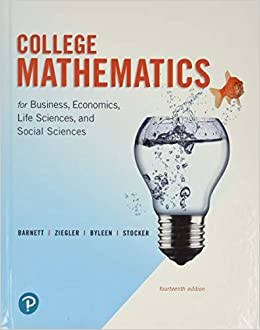Question
Your answer to each question must be at most 150 words Q#1. Answer one of the following questions (answer either question A or B): A.
Your answer toeach questionmust be at most 150 words
Q#1.Answer one of the following questions (answereitherquestion AorB):
A.In hisSemiannual Monetary Policy Report to the Congresshttp://www.federalreserve.gov/newsevents/testimony/bernanke20070214a.htmof February 14, 2007, then Federal Reserve Chairman Ben Bernanke said: "Another significant factor influencing medium-term trends in inflation is the public's expectations of inflation. These expectations have an important bearing on whether transitory influences on prices, such as those created by changes in energy costs, become embedded in wage and price decisions and so leave a lasting imprint on the rate of inflation. It is encouraging that inflation expectations appear to have remained contained." What did Bernanke mean when he said that the public's expectations of inflation could "become embedded in wage and price decisions"? What would be the effect on the short-run Phillips curve of the public coming to expect a higher inflation rate?
B.Despite recent positive economic news for the US economy, some Federal Reserve officials are still worried about inflation being too low or even the threat of deflation. Why might an inflation rate that is too low be harmful to the US economy? Why might deflation be harmful (click the link to read the article "Will deflation fears prolong QE or delay the rate hike?"? https://www.washingtonpost.com/news/wonk/wp/2014/10/16/will-deflation-fears-prolong-qe-or-delay-the-rate-hike/
Q#2.The article "The Great Mismatch"http://www.economist.com/node/21528433 from The Economist (September 10, 2011) reported that the natural rate of unemployment in the United States may have risen as high as 7.5%. The article suggested that "Lowering this new natural rate of unemployment will require structural reforms, such as changing education to ensure that people enter work equipped with the sort of skills firms are willing to fight over, adjusting the tax system and modernising the welfare safety net, and more broadly creating a climate conducive to entrepreneurship and innovation. None of these reforms is easy, and all will take time to produce results, but governments around the world should press ahead with them." Why should policymakers be concerned with lowering the natural rate of unemployment? How would the "structural reforms" listed in the article contribute to lowering the natural rate of unemployment? Would the Fed be able to implement them? Briefly explain.
Step by Step Solution
There are 3 Steps involved in it
Step: 1

Get Instant Access to Expert-Tailored Solutions
See step-by-step solutions with expert insights and AI powered tools for academic success
Step: 2

Step: 3

Ace Your Homework with AI
Get the answers you need in no time with our AI-driven, step-by-step assistance
Get Started


